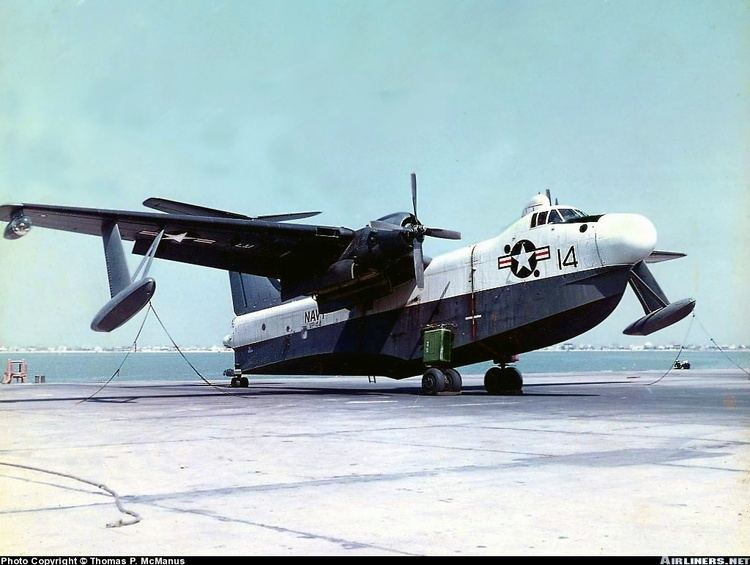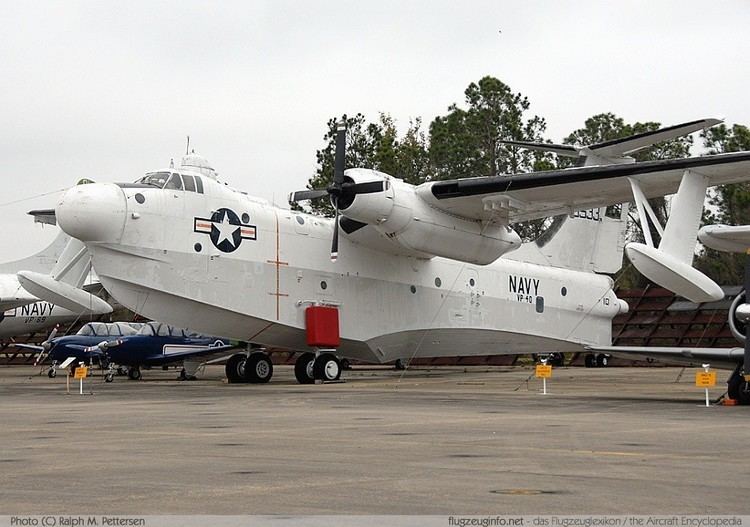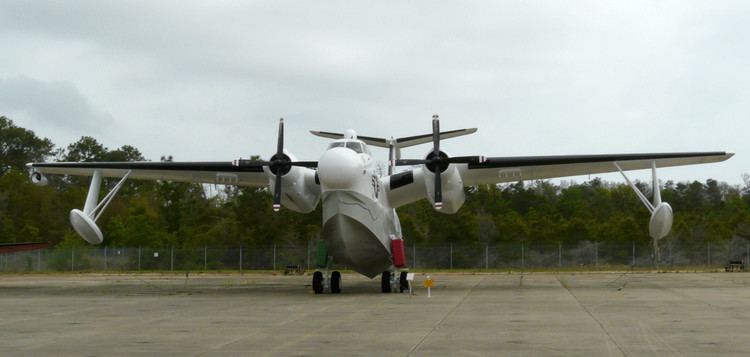Top speed 404 km/h Length 31 m Retired 1967 | Wingspan 36 m Introduced 1952 | |
 | ||
Martin p5m marlin
The Martin P5M Marlin (P-5 Marlin after 1962), built by the Glenn L. Martin Company of Middle River, Maryland, was a twin-engined piston-powered flying boat that entered service in 1951 and served into the late 1960s with the United States Navy performing naval patrol. It also served with the United States Coast Guard and the French Navy. Two hundred eighty-five were produced overall.
Contents
- Martin p5m marlin
- U s navy s martin p5m marlin
- Development
- Design
- US Navy in Vietnam
- US Coast Guard
- French Navy
- Variants
- Operators
- Survivors
- Specifications P5M 2
- References

U s navy s martin p5m marlin
Development

Built as a successor to the PBM Mariner, it had better engines, improved hull form, and a more conventional tail. The XP5M Marlin prototypes were based on the last PBM-5 Mariners, the company designation being Model 237. the type was heavily improved again leading to the P5M-2 (Model 237B), which was redesignated SP-5B. A number of P5M-1 models were also used for training, designated TP-5A (after 1962).
Design

The Marlin was designed as a gull-winged aircraft to place the engines and propellers high above the spray. Power was provided by two Wright R-3350 radial engines. The rear hull did not lift sharply from the water at the tail, instead rising up steadily, a Martin innovation; this gave the aircraft a longer base of flotation and reduced "porpoising" over waves.

The prototype had nose and tail turrets with twin 20 mm (0.79 in) cannons in each, as well as a dorsal turret with two 0.5 in (12.7 mm) M2 Browning machine guns. The cockpit area was the same as the Mariner's. It first flew on 30 May 1948.
The first of 167 production P5M-1 aircraft was produced in 1951, flying on 22 June 1951. Changes from the prototype included a raised flight deck for improved visibility, the replacement of the nose turret with a large radome for the AN/APS-44 search radar, the deletion of the dorsal turret, and new, streamlined wing floats. The engine nacelles were lengthened to provide room for weapons bays in the rear.
The P5M-1 was followed by 116 P5M-2 planes. These had a T-tail to put the tail surfaces out of the spray, an AN/ASQ-8 MAD boom at the rear of the tail-tip, no tail guns (the gun position replaced by the antenna for the AN/APN-122 Doppler Navigation Set), better crew accommodation, and an improved bow to reduce spray during takeoff and landing.
U.S. Navy in Vietnam
The last flying boat operations of the United States Navy were Market Time patrols of VP-40. Maritime surveillance patrols began in February 1965 to locate small craft transporting supplies from North Vietnam to Viet Cong units in South Vietnam. VP-40 operated from seaplane tenders and patrolled off the Mekong delta between Phú Quốc and Vung Tau. The last U.S. Navy P5M, redesignated as SP-5B, was flown to NAS Patuxent River, Maryland on 12 July 1968 for interim storage pending construction of display area at the Smithsonian Institution in Washington, DC. As a display area at Smithsonian did not materialize, the aircraft was later relocated to the National Naval Aviation Museum at NAS Pensacola, Florida where it is currently on display.
U.S. Coast Guard
Seven P5M-1Gs and four P5M-2Gs were built for the United States Coast Guard for air-sea rescue service, but they found the planes difficult to maintain and surplus to requirements. They were subsequently transferred to the U.S. Navy, which redesignated them as TP-5As and used them as training aircraft, since they had no provision for armament.
French Navy
The French Navy took delivery of ten former U.S. Navy Marlins between 1957 and 1959 to replace Short Sunderlands in maritime patrol service, based out of Dakar, Senegal in West Africa. They were returned five years later.
Variants
Operators
Survivors
One SP-5B is located at the National Naval Aviation Museum at Naval Air Station Pensacola, Florida. This aircraft, BuNo 135533, is believed to be the last remaining example of the Marlin. It is now displayed inside the new hangar (as of the spring of 2010) and much of the exterior has been restored. The restoration is being financed by the museum and the Mariner/Marlin Association.
Specifications (P5M-2)
Data from United States Navy Aircraft since 1911.
General characteristics
Performance
Armament
Avionics
